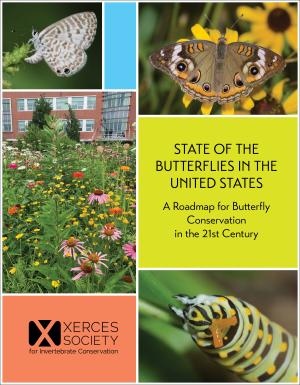
A study published in March 2025 showed that we are losing butterflies at a rate of 1.3% per year in the contiguous US: more than one-fifth of our butterflies disappeared between 2000 and 2020. Perhaps more alarming, over 40% of assessed species fell in numbers by 50% or more—and two dozen species suffered more than 90% losses.
State of the Butterflies in the United States presents a summary of those findings, species-level information on population trends for each of seven regions, and most importantly, a roadmap for how we can recover butterflies in the places we live, work, and play.
Butterfly habitat should be woven into all parts of our landscapes—farmland, utility corridors, solar arrays, bike paths, roadsides, natural areas, and backyard and community gardens—to provide homes for common and wide-ranging butterflies as well as rare and at-risk species. To recover butterflies, we must combine efforts across towns and cities, working lands, and natural areas as well as in the linkages and stepping stones which provide connecting pathways. Achieving a healthy landscape will involve collaborations that use land management knowledge coupled with applied science to identify the best ways to help. This will take concerted effort but helping butterflies thrive will, in turn, have immense benefits for human health and well-being.
